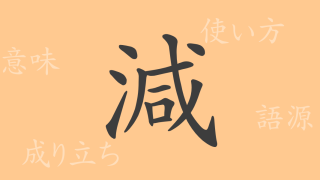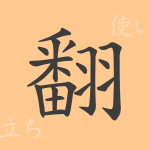Language is a mirror reflecting culture, and among them, kanji (Chinese characters) encapsulate the history and spirit of East Asia. The commonly used Japanese kanji “凡” (han) may appear simple, but it carries profound meanings and diverse applications. This article delves into the world of the kanji “凡” (han), unraveling its origins and modern-day uses.
Origins of 凡 (han)
The origins of the kanji “凡” (han) trace back to ancient China. This character originally consisted of two parts: “二” (two) and a simplified pictograph of a “鳥” (bird), symbolizing birds flying in a flock. From this imagery, meanings such as “whole” and “ordinary” emerged. Over time, the character was simplified to its current form.
Meanings and Uses of 凡 (han)
“凡” (han) is used in many words, such as “平凡” (heibon – ordinary), “凡例” (hanrei – legend), and “凡才” (bonsai – mediocre talent). This character conveys meanings like “ordinary,” “average,” and “general,” and is used to generalize or indicate a non-special state. It is also used in contexts implying “approximately” or “roughly” in explanations and annotations.
Reading, Stroke Count, and Radical of 凡 (han)
The kanji “凡” (han) is easy to remember due to its simple structure.
- Readings: The on’yomi (音読み – Chinese reading) is “ハン” (han), and the kun’yomi (訓読み – Japanese reading) includes “およそ” (oyoso) and “すべて” (subete).
- Stroke Count: “凡” (han) has a total of 3 strokes.
- Radical: The radical is “几” (tsukue – table).
Idioms, Proverbs, and Phrases Using 凡 (han)
Idioms, proverbs, and phrases containing “凡” (han) are frequently used in Japanese. Here are some examples:
- 平凡 (へいぼん – heibon): Ordinary and unremarkable. Also refers to such a person.
- 凡例 (はんれい – hanrei): A key or legend for maps and charts.
- 凡才 (ぼんさい – bonsai): Mediocre talent. Talent that is not particularly outstanding.
- 凡庸 (ぼんよう – bon’yō): Ordinary and unremarkable.
- 凡そ (およそ – oyoso): Approximately. Roughly.
These idioms and phrases reflect the meanings of “ordinary” and “general” inherent in “凡” (han) and are practical expressions used in daily life.
Summary of 凡 (han)
The kanji “凡” (han) possesses deep meanings and diverse applications, far beyond what its simple form suggests. Widely used from everyday conversation to specialized contexts, this character symbolizes the richness of the Japanese language. We hope this exploration has brought the world of “凡” (han) closer to you. Understanding the culture and history behind words allows you to use them more deeply and richly.

























